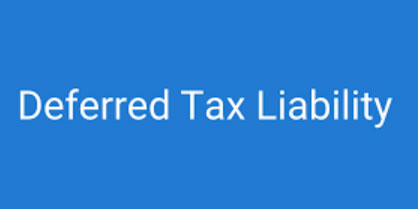An ideal option to save money for retirement is via an IRA. This basically provides a wide range of investment options that offer significant savings on taxes while allowing your money to grow. Although regular and Roth IRAs are frequently the most popular choices, consider alternative possibilities. Spousal IRAs, savings incentive match plans, simplified employee pension plans, and other individual retirement accounts provide equivalent, and occasionally superior, tax and investment benefits.
Now, let’s explore the 7 types of IRAs: which is right for you!
Types of IRA To Consider In 2024
1) Traditional IRA

The most popular individual tax-advantaged retirement savings account is the Traditional IRA, which gathers data from the Investment Company Institute. Among the customary characteristics are:
- $7,000 is the contribution cap in 2024.
- $8,000 if you're above 50 years of age
Contributions may be deductible from your annual taxable income. Everything depends on your current pay and whether or not you and your spouse are members of an employer-sponsored retirement plan.
Investment gains are tax-free as long as they remain inside the protection of the account. The tax rate on retirement withdrawals is your current tax rate.
Ideal For:
Excellent for people who believe their situation doesn't qualify them for a Roth IRA (Individual Retirement Account).
2) Roth IRA
Unlike a traditional IRA, a Roth IRA allows you to make after-tax contributions and take tax-free withdrawals when eligible. The Roth account's investing parameters are as follows:
- $7000 is the contribution cap for savers under 50 in 2024 and $8000 for above 50.
It will be tax-free if you contribute to a Roth IRA. Withdrawals of you will be tax-free because you have paid post-tax contributions.
If you are older than 59 one and a half and have held onto your Roth Individual Retirement Account for at least five years, you are not subject to an early withdrawal penalty. However, withdrawing money from earnings early could come with penalties.
Best For:
Best for people who expect to retire in a higher income tax bracket or who might have to make early payments.
3) SEP IRA

In a simplified employee pension IRA, employers can easily set aside funds for retirement, not only for their employees but also for their benefit. SEP programs are less expensive to set up and maintain than typical retirement plans.
- It takes at least 21 years of age for an employee to open an account.
- Employees must commit to the company for at least three years.
- In 2024, he will get at least $700.
The maximum contributions for the employer are:
- The percentage was determined by using the $345,000 earnings cap for 2024 and restricted annually to the lesser of $69,000 in 2024 or 25% of annual earnings.
One benefit of SEP Individual Retirement Accounts is they don't require vesting. This implies that you fully own any donation made by your employer. Employees can not make direct contributions to their own SEP IRAs.
Best For:
Best for small businesses that want to avoid the startup and ongoing costs of a conventional retirement plan.
4) SIMPLE IRA:
A simple full-term IRA is a Saving Incentive Match Plan for Employees. A basic IRA may be a saving plan after retirement where workers and bosses can contribute to a conventional IRA. A basic IRA is an excellent choice for little businesses without a current retirement arrangement, particularly those with 100 or fewer workers.
The company will coordinate up to 3% of their compensation if the laborer chooses to contribute. On the other hand, if they don't want to pick it, then they will coordinate up to 2%.
Best For:
Beneficial for small businesses that have 100 or fewer employees.
5) Backdoor IRA
Even if your income exceeds the limit for a direct Roth IRA contribution, you can still convert a nondeductible conventional retirement account contribution into a Roth IRA by using the idea of a backdoor Roth IRA. The backdoor Roth conversion has no tax ramifications if done correctly.
Putting money into a traditional Individual Retirement Account with a non-deductible contribution is the first step towards converting a backdoor Roth IRA. The conventional IRA allows nondeductible contributions without any income restrictions, unlike a Roth IRA.
Convert the non-deductible Individual Retirement Account contribution into a Roth IRA after finishing the first step. The conversion is a nontaxable occurrence, in contrast to transferring pre-tax IRA funds into a Roth IRA.
Best for:
People who earn too much to contribute directly to a Roth IRA but want tax-free withdrawals in retirement.
6) Spousal IRA
According to the IRA, a person must have received income. However, there is a workaround for this regulation for married taxpayers. The pair can still contribute to their own individual IRAs, either Roth or traditional, even if one is unemployed or has a low income. For a spousal IRA, the following qualifications and contribution caps apply:
- Contribution caps for 2024 are $8,000 for those 50 or above and $7,000 for those under.
- Tax returns for couples must be filed jointly.
Either spouse may contribute to the spousal IRA, even if one spouse makes all the contributions. The sole restriction is that the non-working spouse's name must be used to open the spousal IRA.
Best For:
Ideal for married couples with one nontaxable income filing jointly.
7) Self-directed IRA
Traditional and Roth self-directed IRAs are subject to the same eligibility and contribution requirements as regular IRAs, with one significant exception: the account's contents. You can possess properties such as privately held businesses under this category. You should be aware of the following points:
A trustee or custodian with experience in the less common investment categories you wish to hold in the account is needed to set one up. The IRS prohibits holding items like life insurance and valuables in the account.
The IRS considers several forbidden "self-dealing" activities within a self-directed retirement account to be the same as receiving a payout. Examples of these transactions include replacing the faucet in an IRA-owned rental property or mowing the lawn.
Best For:
Ideal for retirees with the most investment possibilities.
Conclusion
That’s all about the 7 Types of IRAs: which is right for you! In the end, we can conclude that every kind of IRA has a unique mix of benefits, drawbacks, and characteristics. An IRA should be selected based on the individual's preferences, income levels, and financial objectives. Through comprehension of the subtle differences between each kind, people can make well-informed choices to ensure a solid and varied retirement plan that suits their requirements.





